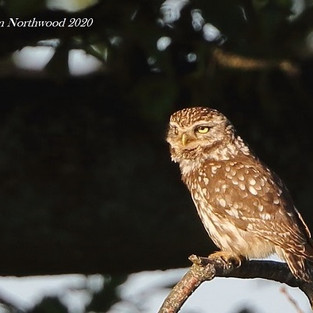Still on Lockdown
- Sam
- May 11, 2020
- 3 min read
Updated: Jun 5, 2020
In early May, the significant sighting was an Osprey over the local reserve on 3rd whilst Grasshopper Warblers (c.5), Sedge Warblers and Reed Buntings sang in the sedge; Garden Warblers, Willow Warblers, Chiffchaffs, Whitethroats and Blackcaps sang in the trees and hedges; Snipe drummed; Whimbrel and Curlew called overhead, and Cuckoos echoed each other’s calls in the tall stands of trees nearby. The remaining few days were spent tracking down Barn Owls – with some success, especially on 11th but the Short-eared had vanished. Insects (Orange Tip and Green-veined White butterflies, Common Carder Bee, Azure and Large Red Damselflies) and Brown Hare became the focus of my attention, too, as the winds were all wrong for skua watching. (Easterlies/Northerlies had blown almost constantly since lockdown began, hence the fine weather here.) Red-throated Diver (2) and Harbour Porpoises (c.3) were the only things of interest on the one day I did try. When the winds did change (17th), I still failed on the skua front but a 'flock' of 11 Red-throated Divers was a nice surprise, and there were also small groups of Fulmar, Gannet, Kittiwake and Guillemot, and 1 Common Tern. My first Swift flew over the house on 15th May. On 18th a flock of 18 Red-throated Divers drifted over the Scar, beating my previous one-flock count, and then finally, with continued westerlies (albeit light ones), my luck changed and on 20th a couple of Arctic Skuas flew close overhead, one pale-phase, one dark. I tried to make them into Long-taileds but the photographic evidence proved me wrong. Still nice birds, though. In the evening the Barn Owl showed well and in lovely light. Three-and-a-half hours of sea-watching on a very windy 22nd didn't produce the skua haul I had anticipated but a Bonxie showed well. Of greater interest was the influx of Manx Shearwaters - a rare bird on the Solway. I counted about 100 in all (duplication of various small flocks drifting in and out of the estuary may have been possible) and had some nice views occasionally. There were also small but regular flocks of Fulmar, Gannet, Arctic Tern, Kittiwake and Guillemot. The following day (23rd), the strong south-westerlies continued and brought in another adult pale-phase Arctic Skua, but this was quickly trumped by 2 Pomarine Skuas, the second of which showed especially well, and the 'spoons' were easily visible. Manx Shearwaters had all but disappeared (I saw just one in 3 hrs) but the Gannets showed better today. By the 24th, the winds had died quite a bit and swung further round to the west; I did find another Pomarine Skua but that was about it - in four-and-a-half hours of sea-watching! No auks, no shearwaters, no Fulmar... Even the Gannet and Kittiwake numbers were down. A pair of Eider was a nice surprise. Despite the winds being stronger than anticipated (and still from the west) on the 25th, today proved to be no better for sea-watching: a further three-hour stint produced just 2 Pomarine Skuas, but nice views of Guillemot (c.100), Kittiwake (c.60) and Gannet (c.30). The 26th was poor for sea-watching (fine weather, light westerlies) but I did manage to add to my Cumbrian list (no mean feat these days) with a pair of presumed Velvet Scoter. No, I didn't see the white wing-patches on the male (mainly because they were asleep), but the female looked good for this species: no clear-cut bicoloured head pattern, just the whitish patch near the eye. If only I'd see them fly! I also snapped a dodgy Red-throated Diver - probably a juvenile/mounting adult, a weird-looking thing. Closer inspection of my photos also revealed a few Razorbills amongst the Guillemots and Whimbrel put on a nice show as they flew past. In the late evening, Cuckoos showed well and were especially noisy at the nearby reserve. Finally, on 1st June, with lockdown restrictions gradually being lifted, a Sparrowhawk made another visit to the back garden, whilst a visit to a friend's nearby enabled me to watch a gorgeous Little Owl in the late evening sunshine.










































































Comments